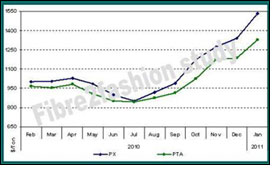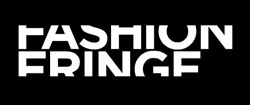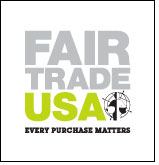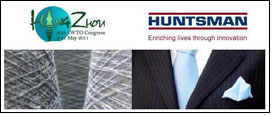 Paweł Lewandowski
Paweł Lewandowski Rebekah Wing
Rebekah Wing Julia Alcântara
Julia Alcântara Anna Le
Anna Le Crystii Lin
Crystii Lin

Prince William emerges from Buckingham Palace in his father's dark blue Aston Martin as the crowd roars. The number plate on the rear said 'Just Wed'

Prince William and Kate Middleton kiss for the crowds

Over 1900 guests were assembled in the historic cathedral to watch the ceremony, with another two billion viewing worldwide, wait in great anticipation for the arrival of the bride.
The 29-year-old Kate Middleton pulled up to the Abbey in a Rolls-Royce with her father just before 11am local time.
Kate’s dress, designed by Sarah Burton, the British creative director of the Alexander McQueen label, featured a 2m 70cm train that flowed on the red carpet as Kate walked up with her father, Michael.
William had arrived 45 minutes before the start of the ceremony, dressed in a bright red British army tunic cut by a blue sash and accompanied by his brother and best man, Prince Harry.
Prior to the wedding service, Buckingham Palace announced new titles for the William and Kate as Duke of Cambridge and Her Royal Highness the Duchess of Cambridge respectively.
The college sweethearts are expected to one day become the King and Queen of England.
The title, Earl of Strathearn and Baron Carrickfergus were also given to William along with Kate’s title as Countess of Strathearn and Baroness Carrickfergus.
Among the prominent guests at the historic Abbey were soccer star David Beckham and his wife; Mr Bean actor Rowan Atkinson; singer Elton John and his partner, David Furnish and director Guy Ritchie.
Kate and William gently held right hands and stared into each other’s eyes as they exchange vow in the ceremony conducted by the Archbishop of Canterbury, Rowan Williams.
For Kate, there was no promise to obey, instead she pledged to "love, comfort, honor and keep him."
When it came time to place Kate’s thin gold band on her hand, William struggled slightly and she helped him tug it into place.
Only one ring was exchanged – made from ore that came from Clogau St David’s mine at Bontddu in North Wales and was given to William as an engagement present from the Queen.
William, who wears a signet ring, chose not to wear a wedding ring.
The approximately hour-long ceremony included such musical pieces as the popular hymn Jerusalem, the traditional English melody Greensleeves and works by Edward Elgar and Benjamin Britten.
William also chose to include Guide Me, O Thou Great Redeemer, which was sung during his mother, Princess Diana’s, funeral service in 1997.
Following the service, William and Kate stepped into a private part of the Abbey briefly to sign three marriage registers, accompanied by their witnesses – Prince Charles and the Duchess of Cornwall, her parents, Carole and Michael, and their siblings, Harry and Pippa.
A hour later, the newlywed couple walked down the red-carpet
 Polyester constitutes the main end use segment of PTA, with 61% of the total global consumption. A hike in PTA price has resulted in an increase in the price of Polyester Staple Fibre (PSF).
Polyester constitutes the main end use segment of PTA, with 61% of the total global consumption. A hike in PTA price has resulted in an increase in the price of Polyester Staple Fibre (PSF).
In 2007, global consumption of PTA was 37 million tons. It is estimated to grow at 6% per annum and reach more than 50.5 million tons by the end of 2012. The industry is currently facing surplus capacity.
Massive capacity additions in the polyester industry have fueled the growth of PTA industry. Expansion of polyester capacity, more particularly in India, and China is likely to surpass the growth of PTA capacities.
This will make sourcing PTA tough during 2011, and a similar trend is likely to continue in the coming 2-3 years as well.
On the other hand, PTA producers would get good margins out of the same. PTA market is experiencing good margins and is positively expecting the same trend to continue in next year also.
 There is one week left to submit entries to Fashion Fringe 2011, the emerging talent platform set up by Colin McDowell in association with IMG Fashion.
There is one week left to submit entries to Fashion Fringe 2011, the emerging talent platform set up by Colin McDowell in association with IMG Fashion.
Aspiring fashion designers have the chance to submit their work until the 4th of May, which could provide them with the opportunity to be mentored by this year’s judging panel, which includes Claudia Schiffer and Roland Mouret.
Claudia Schiffer said “I have watched Fashion Fringe grow from strength to strength over the past few years, and am delighted to be able to add my support this year. Fashion Fringe is a fantastic business platform for any aspiring designer, and I look forward to helping some of London’s creative design talent thrive and grow over the coming months.”
Three selected candidates will be given studio space through-out the summer, to work on their first Fashion Fringe collection at London Fashion Week in September.
One designer will be selected as the overall winner by the judging panel and will receive a 2 year development package to set up and sustain their business; which includes a mixture of cash, business advice, mentoring and a fully equipped studio at Somerset House.
Roland Mouret said "It's not just exciting, but also very relevant to feel part of Fashion Fringe where so many young talents take their journey in this amazing, frustrating world of fashion. What's better than to have Colin McDowell as a Fairy God Mother?"
Fashion Fringe was set up in 2004 by Colin McDowell in association with IMG Fashion, in response to the need to support emerging talented designers in London and to keep them in London. The aim is to discover, nurture and sustain cutting edge design talent across the UK and since inception the inspirational and committed business model has helped launch more than seventeen designers onto the London fashion scene.
 Since it was first introduced in 1967, the Levi's Trucker Jacket has served as an iconic canvas for artists around the world, from the boogie-down Bronx to the favelas of Brazil.
Since it was first introduced in 1967, the Levi's Trucker Jacket has served as an iconic canvas for artists around the world, from the boogie-down Bronx to the favelas of Brazil.
Beginning this week, the Levi's Trucker Jacket will serve as the canvas for a special collaboration celebrating the brand's partnership with the Art in the Streets exhibition at The Museum of Contemporary Art, Los Angeles (MOCA). All proceeds from the sale of the jackets will benefit MOCA and the community programs it supports.
From now through August 6, ten special, limited-edition Levi's x MOCA Trucker Jackets designed by the most dynamic and influential artists from the graffiti and street art community will be released every two weeks in limited-edition quantities. The Levi's x MOCA Trucker Jackets feature artwork on the back panel created by artists including Keith Haring, Shepard Fairey, Chaz Bojorquez, Kenny Scharf, Lady Pink and KR. Each jacket is packaged in a commemorative box bearing a stamp reminiscent of the artist's "tag" and will be available for purchase at The Geffen Contemporary at MOCA (152 North Central Ave).
"Our Trucker Jacket has been an integral part of the uniform of graffiti and street artists for generations," said Robert Hanson, Levi's Brand Global President. "This collaborative project is a special way to celebrate the Trucker Jacket's intrinsic tie to the street art community and culture, as well as MOCA's longstanding leadership in the art world."
The collection serves as a retrospective of the history of street art – the jackets will be launched in chronological order of each artist's work, with an homage to the late, great Keith Haring as the final release.
For the Levi's x MOCA collaboration, the brand has partnered with the following pioneers in street art and graffiti who are also featured in MOCA's Art in the Streets exhibition: Chaz Bojorquez, Crash, Lady Pink, Kenny Scharf, Mr. Andre, Krink, Revok, Shepard Fairey, Neck Face, Keith Haring.
The Levi's x MOCA Trucker Jacket project is part of a larger ongoing partnership between the Levi's brand and MOCA. Earlier this month, the Levi's Film Workshop opened its doors within the Art in the Streets exhibition at the Geffen Contemporary at MOCA in downtown Los Angeles. The story of graffiti and street art, as well as other cultural forms that have emerged from the underground subculture, will come to life in the Levi's Film Workshop through a series of collaborative film and video projects, robust educational programming and a city-wide screening series.
The Levi's Film Workshop and Art in the Streets exhibition will run from April 17 through August 8. Access to the Workshop will be open to the public and free of charge during regular museum hours.
The International Wool Textile Organisation (IWTO) is organising its 80th Congress in China's ancient city of Hangzhou on May 09-11, 2011. The IWTO Congress is an annual meeting point for the whole wool industry covering the wool demand chain, from wool growers to retailers. Being a natural, renewable and biodegradable fibre, sustainability is wool's greatest asset with high importance in today's textile industry.
Therefore this year's congress runs under the theme "Sustainability – Guaranteed by Wool" continuing further with the wool industry's strategy.
For the third time the IWTO Congress is hosted in the People's Republic of China, emphasizing the importance the country plays for the wool industry in relation to the wool manufacturing process as well as a consumer market. With its special combination of ancient culture and beautiful landscapes as well as being an important wool and textile industry hub, Hangzhou is an ideal conference location.
IWTO is the international body representing the interests of the world's wool-textile trade and industry. As such, its membership covers the woolgrowers, traders, primary processors, spinners and weavers of wool and allied fibres in its member-countries, as well as all kind of organisations related to wool products and the wool business in general.
It provides for them a forum for discussion of problems of joint concern and acts as their spokesman with all those bodies and authorities towards whom a common approach is deemed necessary.
 Chen Bao-lang, Chairman of the Kuokuang Petrochemical Technology Co. informed legislators that, his firm is set to officially call back the application for assessment of ecological effects of its plan of constructing a naphtha cracker plant in Changhua County, which apparently means an end of the project.
Chen Bao-lang, Chairman of the Kuokuang Petrochemical Technology Co. informed legislators that, his firm is set to officially call back the application for assessment of ecological effects of its plan of constructing a naphtha cracker plant in Changhua County, which apparently means an end of the project.
The state-run CPC Corp., during a Board Meeting on April 27, would request the Environmental Protection Administration to cancel its application for environmental assessment. Besides, CPC would also discuss future prospects of the petrochemical firm with other private shareholders, during the meeting.
As revealed by Chen during a parliamentary hearing, CPC Corp. is the sole largest shareholder of the Kuokuang project, holding around 43 percent stock.
The private shareholders, who jointly hold majority shares in the Kuokuang project, have power to compel Kuokuang to keep the project going, but there are meagre possibilities, as President Ma Ying-jeou has also turned down the project.
Around NT$900 billion has already been invested in the project by now, with NT$630 billion in the first phase in Changhua and the rest for construction of the second phase.
According to an expert, after closure of the Taiwan's Kaohsiung based fifth naphtha cracker plant, CPC Corp. would increase ethylene imports, to meet the shortfall of over 300,000 tons of the vital raw material.
 Fair Trade USA, the leading third-party certifier of Fair Trade products in the United States, today releases its 2010 Almanac. With more than 9,500 Fair Trade Certified consumer products offered by more than 700 industry partners at more than 60,000 retail locations, this yearly report serves as a barometer for the health and growth of Fair Trade in the United States.
Fair Trade USA, the leading third-party certifier of Fair Trade products in the United States, today releases its 2010 Almanac. With more than 9,500 Fair Trade Certified consumer products offered by more than 700 industry partners at more than 60,000 retail locations, this yearly report serves as a barometer for the health and growth of Fair Trade in the United States.
The 2010 edition showcases record volumes of Fair Trade Certified imports, a dramatic increase in organic imports, expansion into popular new product categories, a surge in consumer demand and increased brand recognition for Fair Trade Certified goods. This continues to parallel overall growth in consumer awareness of Fair Trade, which has quadrupled in the past five years.
While the world economy saw continued instability in 2010, Fair Trade USA bucked the trend and certified nearly 109 million pounds of Fair Trade coffee, 62 percent of which was also certified organic. Not only did this growth result in over $44 million in premium funds paid to coffee farmers to date, it also reflects the ever growing desire for socially-conscious consumers to align their purchasing habits with their values. The money generated by this surge in consumer demand can be reinvested into farming businesses to build infrastructure and capacity, as well as into farming communities for schools, roads, health care and other development efforts.
"As consumer demand for ethically-produced goods increases, we're able to chip away at the cycle of poverty that grips farming communities around the world," said Paul Rice, President and CEO of Fair Trade USA. "Through their participation in Fair Trade, farming families have earned more than $220 million in additional income since 1998, $56 million of which will be invested specifically in community development programs that provide access to education and life-saving health care."
One of the most exciting advances that occurred in 2010 was expansion within both new and existing product categories, revealing increased demand in the U.S. market for Fair Trade items across the board. Just a few of these new products include apparel, green peppers, vodka and a wide array of herbs, spices and extracts. In 2010, over eight million pounds of all-organic Fair Trade pineapples were also re-introduced to the market.
In response to the increased availability of Fair Trade goods, 2010 was witness to tremendous growth in several key product categories in addition to coffee. Cocoa experienced a 67 percent growth in imports since 2009, 88 percent (3,882,000 lbs) of which was also certified organic. Fair Trade citrus saw a 96 percent increase in growth in 2010, imports of sugar rose by 60 percent (89 percent also organic), and imported pounds of certified vanilla nearly quadrupled due to recent commitments from major U.S. buyers. We're also hopeful to see additional growth after two Fair Trade wines recently achieved 90+ scores from Wine Spectator, indicating significant increases in quality and recognition from industry insiders.
 The focus of this year's International Wool Textile Organization (IWTO) Congress in China, is "Sustainability – Guaranteed by Wool." Huntsman Textile Effects, with our proven track record in LANASOL CE sustainable wool dyes, will present a paper that focuses on REACH, the European Union regulation for the Registration, Evaluation and Authorization of Chemicals, which entered into force on 1 June 2007, and the consequences this legislation has on the wool industry.
The focus of this year's International Wool Textile Organization (IWTO) Congress in China, is "Sustainability – Guaranteed by Wool." Huntsman Textile Effects, with our proven track record in LANASOL CE sustainable wool dyes, will present a paper that focuses on REACH, the European Union regulation for the Registration, Evaluation and Authorization of Chemicals, which entered into force on 1 June 2007, and the consequences this legislation has on the wool industry.
REACH has one key central aim: to protect human health and the environment from the risks arising from the use of chemicals. The scope of REACH is really extensive and impacts the entire supply chain from product design and development through to it recycling re-use and disposal.
Within the REACH legislation some chemicals are labeled as Substances of Very High Concern (SVHC), one of the criteria being scientific evidence of probable serious effects to human health or the environment. With most major retailers now including SVHCs in their own Restricted Substance Lists, the commercial pressure to ensure that SVHCs are not present in articles and goods is steadily growing and having a greater impact than compliance.
Chrome dyes have traditionally been the standard for wool dyeing, and potassium dichromate, the mordant used in the after treatment of chromes dyes is listed as an SVHC. Over 12 years ago Textile Effects made a move away from this hazardous dyeing method with innovative technology that allowed replacement of chrome dyes with sustainable products, and a new range of metal-free reactive dyes for wool, LANASOL CE, first appeared on the market. This range has developed so significantly that a recent industry size test proved that the LANASOL CE range outperformed traditional chrome dyes right across the board – at every level of dyeing and processing.
Seriously sustainable innovations from Huntsman Textile Effects are making a difference!